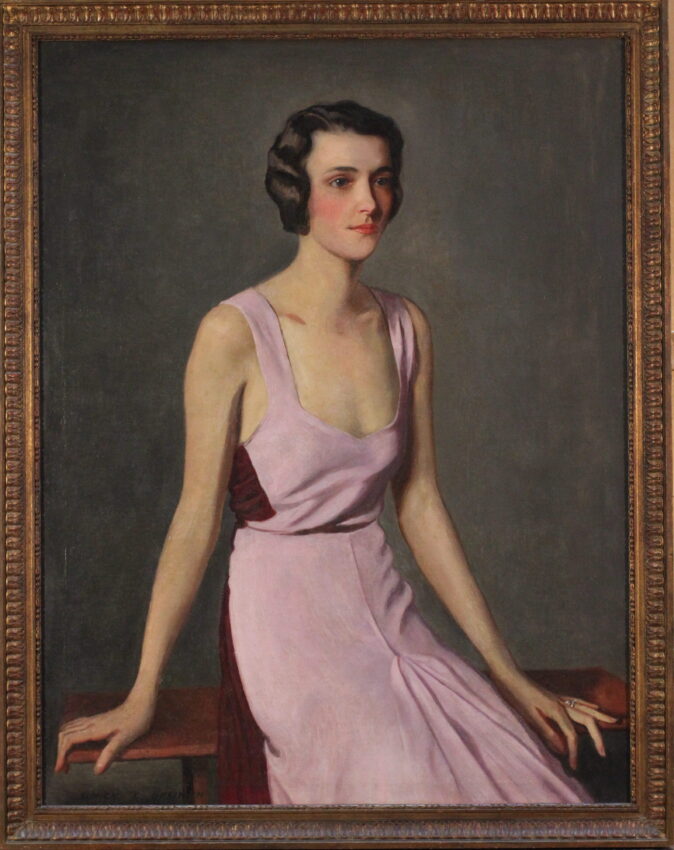Painted portrait restoration requires special skill and training, particularly if a painting is in unstable condition. Stefan Dedecek, Conservator of Paintings, Murals, and Polychrome surfaces at McKay Lodge Conservation Laboratory has such experience, ranging from the treatment of large scale murals to conservation of modern paintings to portrait restoration.
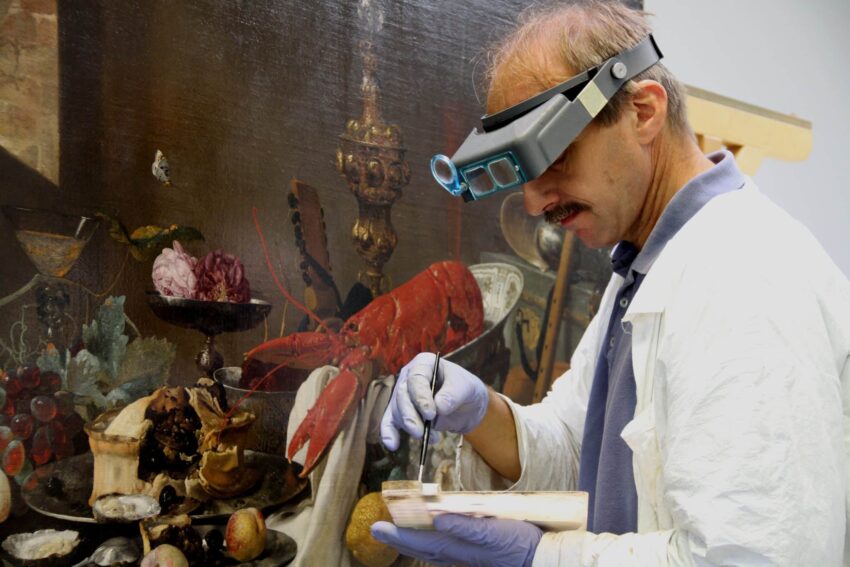
An artwork in need of portrait restoration recently came to McKay Lodge Conservation Laboratory just outside of Cleveland, Ohio. The painting was an oil on canvas by artist Sidney E. Dickinson dated 1933. It is a striking portrait of a young woman dressed in a divine lavender gown.
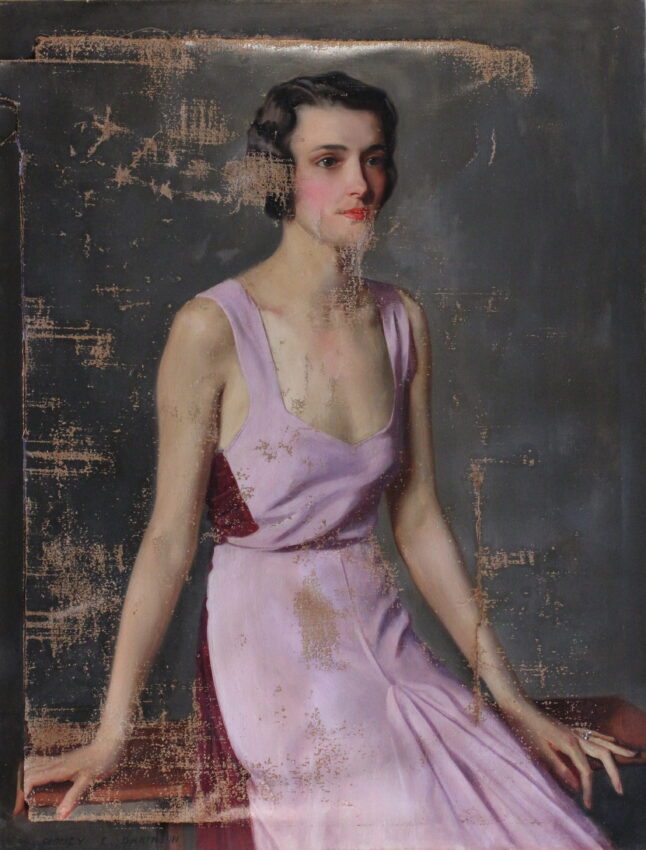
Unfortunately, at some point, the painting suffered severe tear damage and significant paint loss. A major tear in the canvas extended along three sides of the painting as well as a vertical tear just at the sitter’s left. Several other smaller tears are observed too. The damage also resulted in distortions and bulges in the canvas.
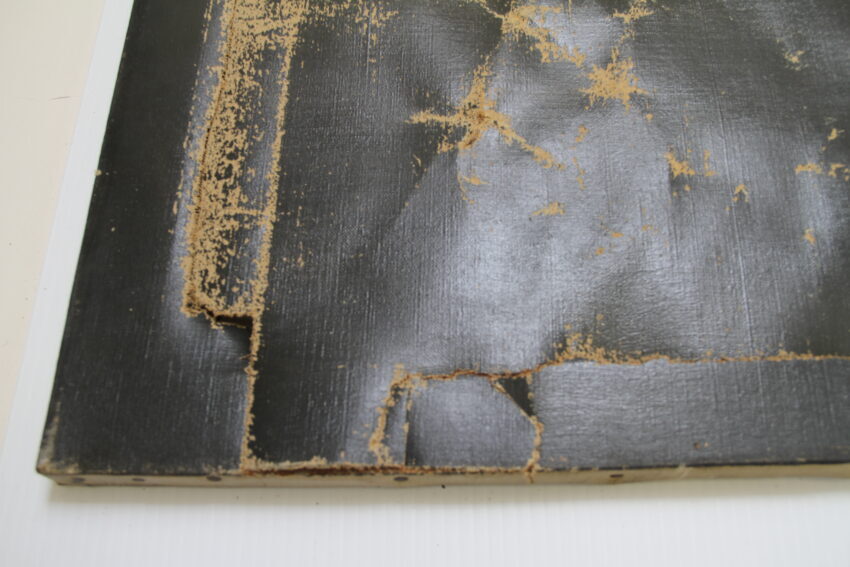
For Conservator Dedecek, the conservation treatment would be challenging and time-consuming; however, he was confident the portrait restoration would both stabilize and improve the overall aesthetic of the oil painting on canvas. Compared with the condition of this portrait before treatment, Stefan Dedecek’s conservation results are striking.
The first step was to locally consolidate insecure flaking areas of paint on the front of the painting. The painting was faced with Japanese tissue paper and removed from the stretcher. The paint film was consolidated overall from the reverse using additional adhesive.
The distortions in the support were flattened using a controlled application of moisture and pressure over time. Tears were mended using adhesive and linen pulp. The painting was then lined onto a new linen fabric with a heat seal conservation-grade adhesive. While lining is considered an invasive treatment option, in some instances like portrait restoration of the Sidney Dickinson painting, the extent of damage requires a lining procedure.
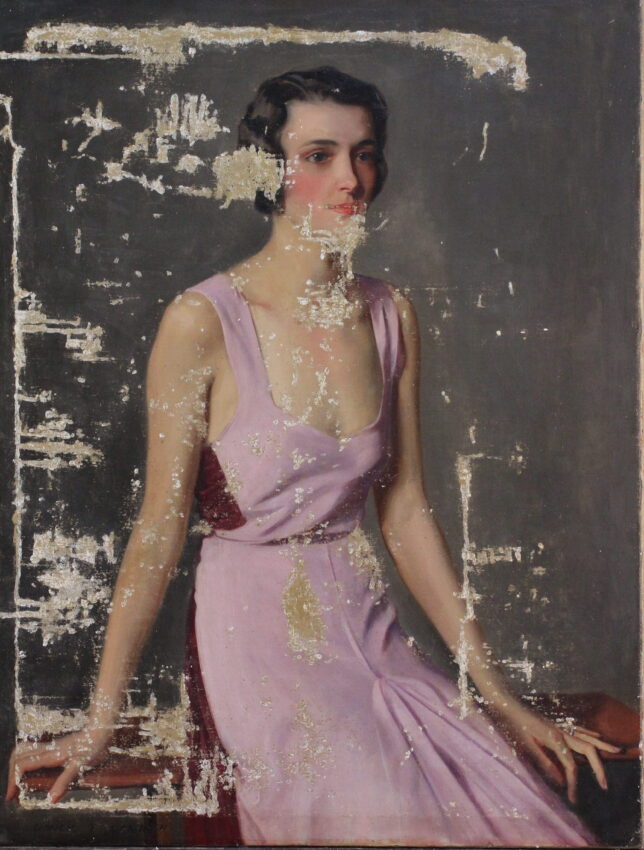
After lining, the conservation treatment is not yet complete. Areas of loss where either the primer layer or paint film is missing must be treated. Compensation of losses or inpainting is necessary to recreate the visual continuity of the overall image. Again, due to extent of the damage, the filling and inpainting procedure would be challenging and time consuming.
Conservator Dedecek carefully filled areas of damage then applied an isolation varnish. The treatment continued with inpainting the many areas of loss, and a final layer of varnish was applied to revitalize the original color of the painting as well as protect it. The frame and stretcher were also treated.
The after conservation treatment results of the portrait restoration returned the painting to a nearly original appearance. It is now stable and the sitter is ready for her close-up.
